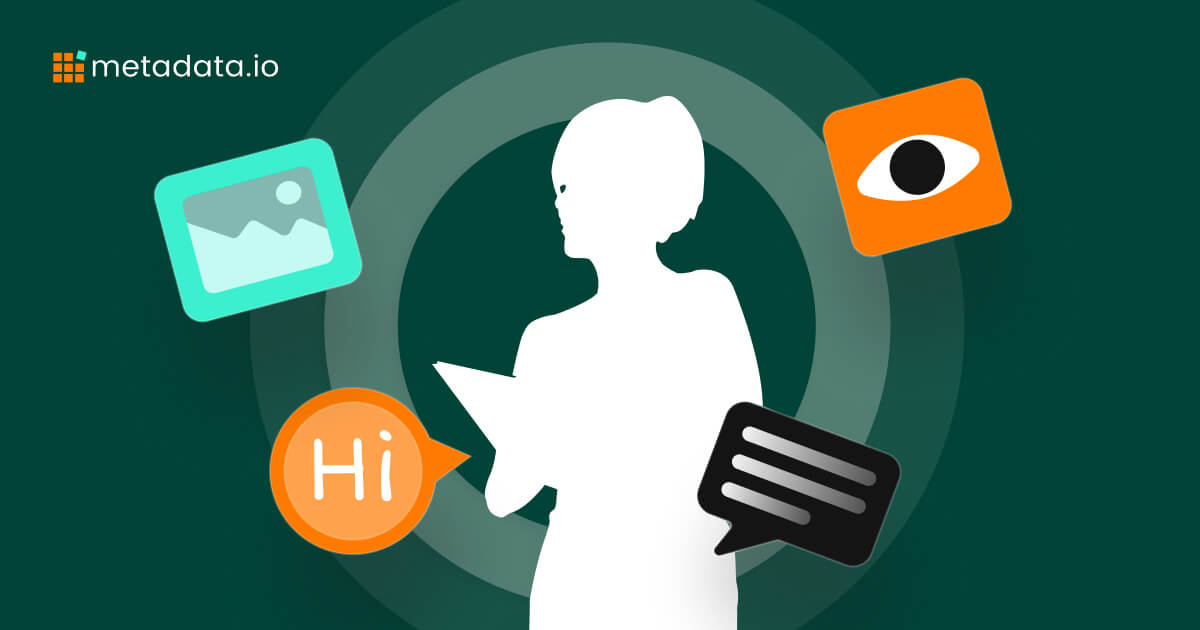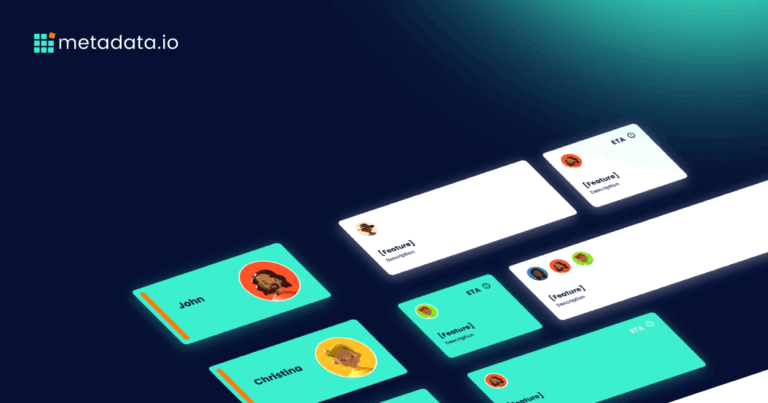How to Implement Data-Driven Ad Targeting with AI

Table of Contents
How Does Data-Driven Ad Targeting with AI Work?
Data-driven ad targeting with AI automates and fine-tunes ad management tasks that used to consume a lot of time. Machine learning systems process massive amounts of data in real time, deciding who to target and how to allocate advertising budgets effectively.
For example, automatization of tasks like bid adjustments streamlines campaigns significantly. Platforms like Google Ads use AI to predict which audiences are most likely to convert and allocate budget accordingly. AI also enables personalized ads by analyzing user behaviors and preferences, helping reach key decision-makers through effective targeting.
In addition, AI systems can adjust ad content dynamically, which keeps messaging relevant as user interactions evolve.
3 Types of Data Sources for AI Targeting
If you want to find the right audience, choose the right data. Data-driven ad targeting with AI uses first-party, second-party, and third-party data, each with unique advantages and challenges.
1. First-Party Data
Collected directly from customer interactions like website visits, transactions, and surveys, first-party data is accurate and highly relevant. A CRM centralizes this information to make it easier to develop audience segments and buyer personas. First-party data also provides insights that can improve customer experiences and allows businesses to anticipate needs and tailor their offerings accordingly.
Since it relies on direct consent, first-party data generally complies with regulations like the GDPR.
2. Second-Party Data
Second-party data is someone else’s first-party data, shared through partnerships. This collaboration can significantly broaden audience targeting with reliable and relevant information.
For example, a company can partner with another company that has a similar target audience but offers different products or services. They can both agree to share anonymized customer data, allowing them to reach potential customers who have already shown interest in what their partner offers.
With any data sharing agreement, transparency and compliance are important. Both parties need to have a clear understanding of how the data will be used, who will have access to it, and what privacy measures will be in place.
3. Third-Party Data
Third-party data comes from aggregators and data marketplaces. It’s useful for adding broad market insights to your first-party picture. This type of data can help identify broader industry trends and competitor benchmarks, offering a wider perspective for strategic planning. Whenever you’re using third-party data, make sure the data sources are reputable, and that the data is collected in compliance with privacy laws to mitigate risks.
If you responsibly blend different data types, you can fine-tune their targeting approach while respecting user privacy.
Tools and Platforms for Data-Driven Ad Targeting
As a marketer, you have a wide range of AI-powered audience targeting solutions to manage ad campaigns. Many handle optimization tasks automatically to make your targeting more efficient and accurate.
AI-powered ad platforms include:
- Google Ads: Google Ads uses AI with Smart Bidding strategies, which automates the bidding process in real-time to optimize for conversions or conversion value. Using machine learning, Smart Bidding analyzes a wide range of contextual signals, such as device, location, time of day, and user behavior patterns, to predict the likelihood of a user taking a specific action. This allows advertisers to set the most efficient bids to maximize ROI.
- Facebook Ads Manager: Facebook Ads Manager uses AI to analyze user data, including interests, behaviors, and demographics, to deliver highly targeted ads to relevant audiences. However, due to its consumer-focused data, B2B marketers may find limitations in reaching specific business audiences solely through Facebook’s native targeting options. If you do use Facebook to reach B2B audiences, and find it expensive, try out cost optimization strategies to reduce your cost per lead.
- Amazon Advertising: Amazon Advertising offers a suite of ad solutions that leverage AI to place products and brands in front of shoppers actively searching for similar items. This platform is especially effective for businesses within the B2C sector aiming to boost product visibility and sales on Amazon’s marketplace.
To improve B2B ad targeting across platforms, you can integrate with a marketing automation platform like Metadata.
- Metadata: It’s an AI-powered platform designed specifically for B2B marketers to automate and optimize digital advertising campaigns. By integrating multiple data sources, Metadata uses machine learning to identify target accounts and decision-makers, and creates precise audience segments. The platform automates campaign execution across channels like LinkedIn and Facebook, continuously testing and optimizing variables such as audience targeting, creative assets, and messaging. This leads to improved lead quality and a more efficient allocation of advertising budgets, and also removes the limitations of native ad platforms in reaching B2B audiences.
To get more out of web analytics, try out Google Analytics’s AI functionality.
- Google Analytics with AI Enhancements: Google Analytics incorporates AI and machine learning features, such as predictive analytics and anomaly detection, to provide deeper insights into user behavior and website performance. The AI-driven insights can predict future actions like potential revenue, churn probability, and purchase likelihood. Automated reports and intelligence alerts help identify significant changes in data trends or user patterns for faster decision-making.
No-Code AI Tools for Beginners
No-code AI tools help marketers use machine learning for ad targeting without requiring programming skills. These tools analyze data, predict audience behavior, and automate decision-making to improve ad performance. Here’s how specific platforms help:
- Lobe.ai: Lobe.ai is a user-friendly platform that allows marketers without coding expertise to build custom machine learning models through a simple drag-and-drop interface. With Lobe.ai, users can train AI models using their own data, such as images or text, to recognize patterns and make predictions relevant to ad targeting.
- Google AutoML: Google AutoML is a suite of machine learning products that enables users to train high-quality custom models tailored to their needs, even with limited ML expertise. AutoML uses Google’s advanced transfer learning and neural architecture search technology, allowing marketers to build models for vision, language, structured data, and more.
- Bubble: Bubble is a no-code platform that allows users to build web applications and integrate AI features without writing code. For marketers, Bubble can be used to develop custom tools or platforms that improve ad targeting and user engagement. With plugins and integrations, users can incorporate AI functionalities like chatbots, recommendation engines, or data analytics directly into their applications.
How Does Data-Driven Ad Targeting Support Ongoing Optimization?
Optimization and automation allow your ads to evolve with audience preferences. Dynamic Creative Optimization (DCO) and data-driven content generation, combined with A/B testing, are important tools in this process.
Dynamic Creative Optimization (DCO)
DCO assembles personalized ad content in real time. Algorithms analyze user data—demographics, browsing history, and more—to create ad variants that speak directly to each user segment.
It tests different creative elements automatically to see which ones have the best impact on conversions and returns on ad spend. It eliminates manual A/B testing limitations by rapidly cycling through numerous ad combinations, learning from each interaction, and optimizing in real time. As a result, campaigns become more efficient, and marketers can scale personalization efforts without proportional increases in workload.
These techniques are vital for optimizing ad channels to achieve better campaign results.
Content Generation and A/B Testing
A/B testing measures which ad elements spark the most engagement. This constant experimentation helps marketers identify the best-performing copy, visuals, and calls to action. By systematically comparing variations, A/B testing provides data-driven insights that can significantly improve campaign effectiveness. Automated content generation scales up creative options quickly, so each test offers meaningful variety. Incorporating these results into your data strategy refines campaigns further, ensuring ads stay compelling and relevant.
Additionally, continuous testing allows marketers to adapt to changing consumer preferences, staying ahead of trends and maintaining a competitive edge.
3 Types of Advanced AI-Powered Predictions
As AI continues to evolve, its predictive capabilities are becoming even more sophisticated, allowing businesses to anticipate customer behavior with greater accuracy.
1. Identifying High-Value Users
Predicting what customers will do next gives marketers a strategic advantage. AI systems use techniques like machine learning and data mining to analyze customer data, including browsing history, past purchases, social media interactions, and even external trends.
Predictive lead scoring prioritizes high-value leads by assigning scores based on their likelihood to convert, enabling sales and marketing teams to focus their efforts where it counts most. For instance, AI algorithms can analyze both firmographic and behavioral data to predict customer intent and identify high-value prospects.
AI-powered chatbots gather data from real-time interactions, providing immediate assistance while collecting valuable insights into customer needs and preferences. This data feeds back into AI models, allowing for dynamic content that adapts to user behavior. For example, if a user frequently searches for information on a particular product category, the AI can predict their intent to purchase and present targeted offers or content to nudge them along the customer journey.
2. Implementing Real-Time Bidding (RTB)
RTB auctions ad inventory in real time, letting advertisers bid on impressions automatically. AI evaluates each user’s demographics, browsing context, device type, time of day, and potential value in milliseconds to decide if and how much to bid. This instantaneous decision-making process ensures that ads are served to the most relevant audiences at optimal times.
More precise targeting can save money and raise conversion rates. For example, if a user has shown high purchase intent through previous interactions, an AI system might decide it’s worth bidding higher for an impression. Conversely, for users less likely to convert, the system might bid lower or pass on the opportunity to preserve your budget.
Techniques like dynamic creative optimization pair well with RTB, customizing ad content based on the user’s profile. This means that not only is the ad served to the right person at the right time, but the content itself is tailored to resonate with that individual’s preferences and behaviors.
Moreover, AI-driven RTB platforms can learn and adapt over time, improving bidding strategies based on historical data and performance metrics. This continuous optimization leads to better ROI and more efficient campaigns.
However, implementing RTB also requires careful consideration of data privacy and compliance with regulations like GDPR and CCPA.
3. Predicting Customer Behavior
Advanced machine learning models are at the heart of AI-powered predictions in marketing. Algorithms such as decision trees, random forests, neural networks, and support vector machines analyze complex datasets to uncover patterns and predict future customer behaviors. By training these models on historical data, marketers can forecast trends like customer lifetime value (CLV), purchase frequency, and product preferences.
For instance, clustering algorithms group customers based on similarities in behavior or preferences, which helps with personalized marketing strategies. Classification models predict categorical outcomes, such as whether a customer is likely to respond to a particular campaign. Regression models estimate numerical values, like predicting the expected revenue from a specific customer segment.
Deep learning techniques, including neural networks, can handle vast amounts of unstructured data like images, text, and audio. This capability is instrumental in analyzing social media content or customer reviews to extract sentiments and topics of interest.
Predictive analytics platforms like IBM Watson Studio and Microsoft Azure Machine Learning provide tools for marketers to build and deploy machine learning models without extensive programming knowledge. These platforms offer pre-built algorithms and drag-and-drop interfaces, making advanced predictive modeling more accessible.
Start Using AI for Data-Driven Ad Targeting Today
Data-driven ad targeting with AI offers precision at scale, transforming how B2B marketers approach advertising and campaign management. By using machine learning for audience insights, real-time bidding, and personalized content, companies have achieved significant improvements in efficiency and ROI. However, native targeting options on platforms like Facebook often fall short for B2B needs.
This is where advanced platforms like Metadata come into play. Metadata integrates third-party data and AI to improve B2B ad targeting beyond what’s possible with native tools. By automating campaign execution and optimizing audience segmentation, Metadata helps marketers reach key decision-makers more effectively.
Transform your marketing strategy with Metadata.io—drive more leads, optimize campaigns, and scale your results effortlessly. Book an intro today!


